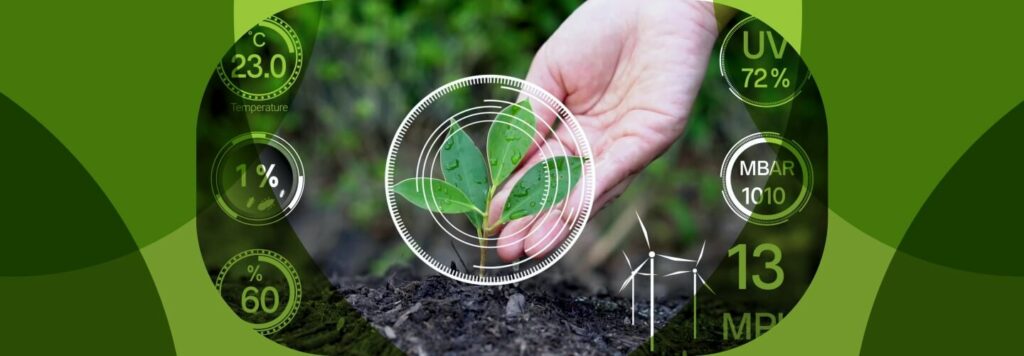Precision Farming – Redefining Future with Farm Management Technology

Growing awareness about precision farming and its link with various other agriculture technologies has improved the significance of farm management in the modern agriculture industry. The connection between precision agriculture and farm management is inextricable and indispensable for agribusinesses. Here is how precision agriculture practices can be simplified with the implementation of next-generation farm management technology.
Over the past few years, the way advanced technologies are revolutionizing the relationships between consumers and industry operators has been widely discussed. So far, most of the excitement about technological potential in the agriculture industry has been focussed on increased productivity, land-saving, and efficient agricultural inputs utilization.
However, in the emergence of a more digitalized era – where information plays an important role in human lives – agriculture is rapidly becoming a data-intensive industry. Consequently, more sophisticated farm management systems have been forthcoming to replace outdated complex and rigid farm systems and software tools.
Precision Farming – A Disruptor in Agriculture
Using smart technologies to improve areas such as climate-smart agriculture, demand planning, and management of end products is highly likely to bring massive social, economic, and ecological opportunities. The Food and Agricultural Organization (FAO) projections indicate the global food demand may increase by 70% by 2025, thereby necessitating a raise in overall food production.
Today, in order to become more efficient in production and communication of appropriate information, farmers need to collect and evaluate a plethora of information from various devices. Precision farming, in particular, is emerging as an effective solution for farmers to manage their farms to not only sustain food needs but also to meet scarcity challenges.
Evolution and Recent Advances in Precision Farming
For long, farmers were on the fence about precision farming. The revolution in precision farming took place during the 1980s, with increased interest in variability of soil fertility, moisture, and hydraulic properties.
Subsequently, significant efforts to deal with nutritional and product safety, labour welfare, economic responsibility, and ecological footprint led to widespread popularity of smart farm management systems and precision farming.
In recent times, greater access to big data and advanced analytics along with the advent of smart, GPS-navigated, and increasingly precise agricultural tools has helped propel several farm management systems onward. Here are five agricultural technologies to enable the development of precision farming in plug and play manner.
GPS to Achieve High Field Accuracy
The global positioning system serves as the basis and most utilized system of precision farming, particularly for auto-steer systems and the production of geo-reference information. Since the agriculture industry gained access to position locating satellites, farmers and operators have found many ways to tie in GPS in their tools for easier and accurate farm management.
With numerous driverless technologies and fully automated farms on the horizon, precise navigation of automated agricultural machinery is becoming one of the most intense areas of research and implementation. Thus, the advancements in GPS technology are set to propel various forms of smart management systems forward.
Farm GIS and Data Management for Improved Decision-making
Precision farming is all about efficiency and making accurate data-driven decisions. Perhaps one of the most promising agtech advancements is the use of geographic information systems (GIS) in farm management.
Farm GIS enables efficient mapping and analysis of large amounts of geospatial data including field boundaries, soil information, yield data, imagery, application maps, and remotely sensed data. Satellites in combination with farm GIS are used as a management tool to characterize a field and subsequently allow more intensive cultivation practices.
In the view of significant advancements, farmers and industry operators are showing a duality in their approach. In addition to using tech to analyse and monitor the use of fertilizer and herbicide, remote sensing for agriculture is emerging as a key to ensure healthier vegetation.
Agricultural Robots and Drones Take Over Mundane Tasks
Despite the unique advantages of satellite imagery and remote sensing, these tools are limited due to weather conditions such as clouds affecting its resolution. During specific times of the season, agricultural drones and manned aircrafts come into play to get higher resolution images, thereby enhancing decision-making.
Today, agricultural robots and drones are considered unrivalled aides in the battle against weeds and insects. Additionally, many farms utilize bots to automate slow and repetitive tasks of farmers, allowing them to prioritize their focus on improving overall production yields.
Cutting down on labour costs and providing farmers with an unparalleled perspective of the farm land, drones and automated bots are thus emerging as the precision agriculture heroes. It won’t be long before these robots conduct all agriculture activities while using drones and interacting with agritech tools to manage their action.
Variable Rate Technology – An Invaluable Farmer’s Tool
Another traditional farm practice that can be put to an end now is the blanket use of fertilizers and pesticides. The variable rate technology works in tandem in modern crop analysis to apply different rates of agrochemicals and water at each location across the field.
VR fertilizer strategy and VR seeding might be a newer concept in precision farming. However, the ideas are similar, as these systems focus on answering challenges around increased productivity and waste reduction.
In contrast to traditional broad application of nutrients and seeds in the same ratios everywhere, VR technology today gives farmers precise control and measurements for exactly what they put in every zone of their fields.
Hardware Telematics and Warnings to Avoid Costly Repairs
Machinery continues to play a significant role in the agriculture industry. Earlier, farmers would use their equipment until it stopped working, repair it, and then repeat the process.
Now with hardware telematics, farmers have the option to remotely collect and manage information from their machinery through warnings to reduce workload. Improvements in longevity of equipment and farm machinery maintenance is thus expected to lay a solid foundation for the future of precision farming.
The ubiquity of mobile phones, especially among the farmers, is significantly contributing to widespread use of telematics technology. It works with major cellular and satellite communication systems to transfer data that users can get access through their computers or smartphones.
Most promising agriculture technologies, from remote sensing to drones and robots, are moving into the future by leaps and bounds. In the context of smart solutions, precision farming and farm management systems offer a myriad of farming techniques for both today’s and tomorrow’s farmers
Lorem ipsum dolor sit amet, consectetur adipiscing elit. Ut elit tellus, luctus nec ullamcorper mattis, pulvinar dapibus leo.
